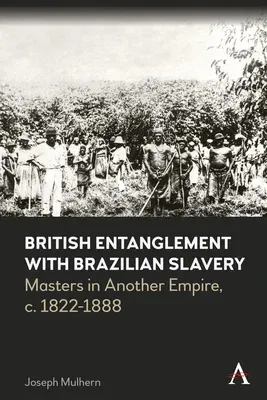This book addresses a neglected aspect of the history of Britain's
centuries-long involvement with transatlantic slavery. For a half
century after the Slavery Abolition Act of 1833, individual Britons and
British enterprises continued to own enslaved people and invest in
slavery in Brazil. This study explores the material basis of this
entanglement, in the context of British anti-slavery policy, to explain
how the last vestiges of British slaveholding in the Americas were only
extinguished by abolition in Brazil in 1888.
Based on extensive archival research on both sides of the Atlantic, this
book provides the most complete survey of British slaveholding interests
in Brazil. From extensive plantations and vast mining operations to the
warehouses and workshops of individual merchants and artisans,
slaveholding was a feature at all levels of the British community in
Brazil. This book also looks beyond slaveholding in its direct form, to
expose the entanglement of British merchant credit and banks with the
illegal slave trade and slavery. As well as tracing the extent and
diverse forms of entanglement, this book also provides analysis of the
treatment of those enslaved by British masters and the strategies
employed by British slaveholders to obfuscate, sanitise, and justify
these practices to compatriots in anti-slavery Britain.
The book also examines how the proliferation of British slaveholding and
other forms of entanglement squared with the explicitly anti-slavery
foreign policy rhetoric of successive British governments during this
period. This discussion pivots around a largely overlooked and little
understood anti-slave trade law of 1843. An analysis of the
parliamentary debates around this bill and crucially, attempts to
implement its provisions in Brazil, shed light not only on practical
difficulties of enforcing British law overseas, but an ambivalence both
codified in legislation and embodied by British officials that
ultimately facilitated the types of entanglement discussed throughout
this book.

